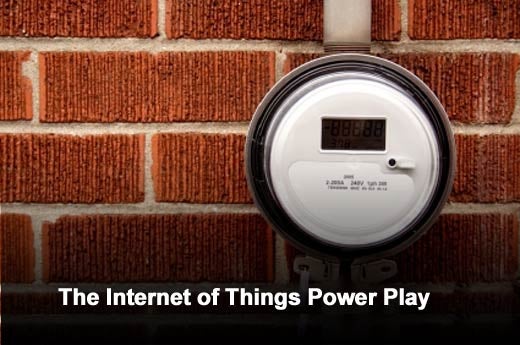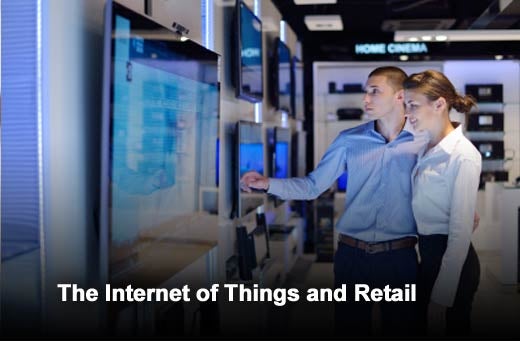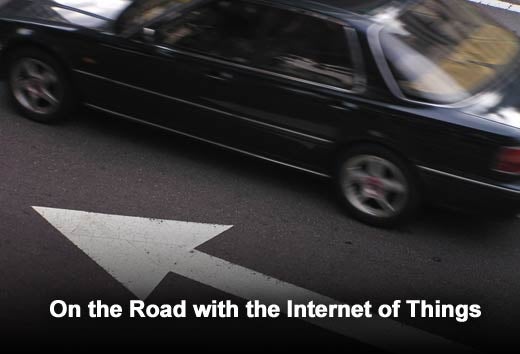The Internet of Things (IoT) is like the air: It is so ubiquitous that it tends to be overlooked. But the reality of the IoT, and the machine-to-machine (M2M) sensors that are its heart and soul, is that it is transforming much of what we do and how we do it.
Strategy Analytics released a report last month that predicted M2M connections will grow from 368 million this year to 2.9 billion by 2022. At that point, the firm said, 78 percent of those connections will be on 3G or faster networks. Despite its ability to hide in plain sight, the IoT is a massively important topic. This slideshow merely scratches the surface of the rapidly expanding uses of the IoT.
Click through for the many ways the Internet of Things is changing our lives.
Turn out (and on) the lights
SmartThings, an app aimed at iOS 7, connects the rooms, lights and doors of a home to the Internet. The newest version of the app, according to TechCrunch, features an improved onboard experience and gradually introduces users to areas in which the IoT can provide assistance, such as “Home and Family,” “Lights and Appliances” and “Damage and Danger.”
The Internet of Things Power Play
InformationWeek offered some ways in which the IoT will affect energy management. Smart meters will revolutionize the power grid, and smart appliances will introduce usage-based pricing and the capability of homeowners to sell power back into the power grid.
The Internet of Things and Retail
Practical eCommerce identified five ways in which the IoT will benefit retailers. It will affect inventory management, fleet management, maintenance and warranty and real-time promotions. It will also make next-generation vending machines a reality.
Almost endless impact.
Libelium offers a 50-item list of how sensors affect daily life. Some highlights: monitoring of streets to identify open parking spots; monitoring structural integrity of structures; creating urban noise maps; automation of traffic congestion measurements; optimization of trash collection by receptacle monitoring; air pollution measurement; smart roads that issue warnings and forest fire detection.
Using the Internet of Things to Track…Things
Technology Review reports on Iotera, a company that makes tracking tags that can be used to keep an eye on an almost limitless number of objects. Examples include the ability to monitor tools at construction sites, pets, kids, and workers in dangerous locales such as oil rigs. It can work without access to commercial wireless networks or Bluetooth. The batteries can last for as long as five months.
The Internet of Things in Business
Business Insider’s BI Intelligence offers a report on business-to-business uses of the IoT. Examples include intelligent advertising and marketing, and smart water systems.
On the Road with the Internet of Things
ComputerWeekly cites fitness, energy and vehicular transportation as areas in which the IoT will have tremendous impact. But the crux of the story is that security issues associated with the flow of so much information are formidable. The key is tightly controlling the application programming interfaces (APIs) that let the sides in an IoT session exchange data.
More of the Endless Uses of the Internet of Things
A true idea of how deeply the IoT will affect day-to-day living can be garnered at the World Future Society. Environmental impacts will be felt in tracking atmospheric quality, trash cans, illegal logging prevention, the status of waterways and in myriad other ways. The story describes uses in other areas as arcane as monitoring hand-washing stations, clothes dryers, pill bottles and the elderly.
The Lights of Christmas
It may not revolutionize how we live, but ioBridge points out that the use of the IoT to control the color of Christmas lights around the world shows the interconnectedness of people as well as the power of the IoT. This is the third year for the CheerLights project. The story says that participants can tweet a color to @CheerLights. The command is processed by ioBridge’s ThingSpeak and distributed via the CheerLights API.
Making It All Work
The full potential of the IoT won’t be realized if the devices can’t freely communicate with each other. For that reason, the Linux Foundation has formed The AllSeen Alliance. The alliance will build around AllJoyn, a framework developed by Qualcomm. It allows systems to discover, connect and interact with each other seamlessly. In addition to Qualcomm, founding members are Cisco, D-Link, Haier, LG Electronics, Panasonic and Sharp, according to Computerworld.













